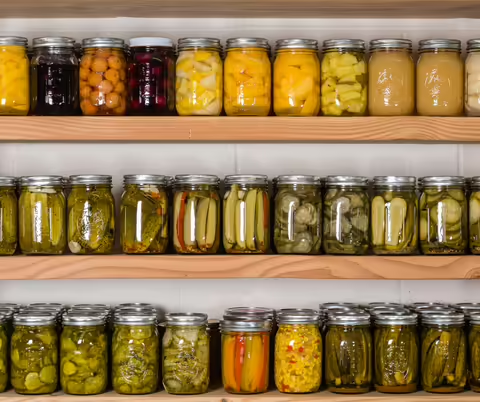DECATUR, Ill. - Canning, freezing, and drying are methods of preserving fruits, vegetables, and other foods. Illinois residents can preserve food at home with these methods, adding days and months to the quality of nutrient-rich foods.
Farmers markets may provide abundance of locally-sourced fruits and vegetables even if home gardens are not yet producing.
Canning is a process in which food is placed in jars and then processed for a specified amount of time in either in a boiling water bath or a pressure canner. Through the canning process, oxygen is removed from jars and harmful microorganisms are destroyed.
Freezing decreases temperatures of foods to levels that reduce action of enzymes and microorganisms. Dehydration, or drying, reduces water in foods to inhibit the growth of microorganisms.
For all three types of preserving, the first step is to find an up-to-date, research-tested recipe. A tested recipe is research-backed to ensure the safety of the product. Find free, tested recipes from the “USDA Complete Guide to Home Canning” or the National Center for Home Food Preservation.
Be aware that both older and recently published recipes may not use safe preserving practices or equipment. This is why it is important to use tested recipes. Unsafe canning practices include the “open kettle method” and canning using microwaves, ovens, and other unapproved equipment. For canning jars, do not use paraffin wax, one-piece lids, and jars with wire bails to seal jars or recipes that call for them. Do not reuse mayonnaise or pasta sauce jars, as these are not designed for home canning.
With a tested recipe in hand, the next step is to gather equipment, such as water bath and/or pressure canners, lids and rings, canning jars, jar lifters, funnels, and more. Canning at home can be done with either a boiling water bath canner or a pressure canner. Note that a pressure canner is different from a pressure cooker. Water bath canning is used for high-acid foods, including fruits and acidified tomato products. Pressure canning is used for low-acid foods, such as meats and vegetables. When canning only use two-piece lids and rings and never reuse lids.
When using a dial-gauge style pressure canner, it is critical to ensure the gauge is reading accurately. If the gauge does not read correctly, over- or under-processing occurs. Over-processing negatively impacts the quality of the food, while under-processing impacts the safety of the food. When food is under-processed, the risk of botulism, a potentially deadly foodborne illness, increases. University of Illinois Extension recommends users of pressure canners test dial gauges every year. Contact your local office to learn more.
Extension is hosting free, weekly online webinars around several food preservation topics. Registration is required.
For more about canning, freezing, and drying at home, visit the National Center for Home Food Preservation from University of Georgia Cooperative Extension and Food Preservation Resources from University of Illinois Extension.
Source:
Caitlin Mellendorf, Nutrition & Wellness Educator, University of Illinois Extension
Diane Reinhold, Nutrition & Wellness Educator, University of Illinois Extension
